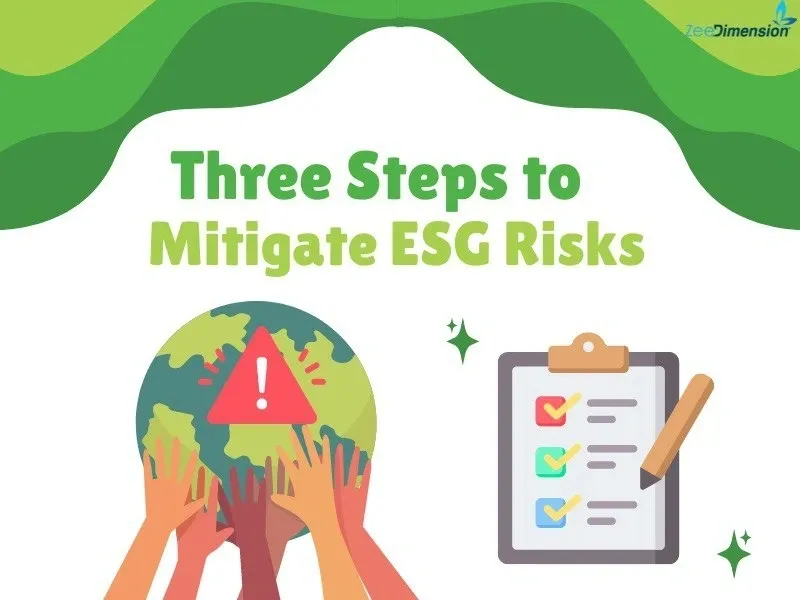
ESG risks are crucial for long-term organizational sustainability and can cause reputational damage, regulatory penalties, and financial losses. Integrating ESG into risk management involves identifying environmental impacts, social challenges, and governance issues, proactively addressing climate change, labor conditions, and ethical governance, and reducing vulnerability to future disruptions. Engaging with stakeholders and maintaining transparency is crucial for understanding ESG concerns. Regular communication builds trust and enhances the organization’s ability to navigate ESG-related challenges. Businesses should prioritize sustainable practices and innovation, reducing waste, increasing energy efficiency, and designing products with sustainability in mind. This mitigates environmental impact, enhances governance, and promotes market resilience. Let’s explore three practical steps to minimize these risks and safeguard your organization.
📷
1. Conduct a Comprehensive ESG Risk Assessment:
Assessing ESG risks involves identifying environmental, social, and governance challenges specific to your organization. These risks may include carbon emissions, resource depletion, climate change compliance, labor practices, human rights, and governance issues like transparency and ethical business conduct. Organizations face unique ESG risks based on industry, geographical footprint, and operational model. Thorough analysis, cross-functional collaboration, and targeted strategies are essential for identifying challenges, mitigating risks, and creating long-term value.
Scenario Example:
A manufacturing company in a water-scarce region faces significant environmental risks due to water resource depletion. This could lead to operational disruptions, increased costs, and regulatory fines. To mitigate this, the company can implement water conservation strategies, invest in water-efficient technologies, recycle wastewater, and collaborate with local governments.
Key Actions for Risk Assessment:
-
Engage stakeholders to identify vulnerabilities.
-
Analyze industry-specific ESG risks.
-
Prioritize risks based on their likelihood and impact
2. Develop and Implement ESG Policies and Procedures:
Next, incorporating sustainability into an organization’s fundamental operations and risk management depends heavily on the development of strong ESG policies. These ought to tackle issues related to the environment, society, and governance, with an emphasis on waste management, employee welfare, emissions reduction, and moral work practices. Integrating ESG policies into a company’s strategy and operations is crucial for success in order to ensure the success of these policies. A culture of accountability and creativity is fostered by defined objectives, quantifiable targets, and staff development, which lowers risks and promotes long-term value creation.
Scenario Example:
Financial institutions can mitigate social risks related to diversity, equity, and inclusion (DEI) by developing a diversity and inclusion policy. This policy promotes fairness, equal opportunity, and representation across all levels of the organization. Initiatives include diverse hiring practices, leadership development programs for underrepresented groups, and creating an inclusive workplace culture. This not only mitigates social risks but also enhances the institution’s reputation as a progressive employer, attracts top talent, boosts employee engagement, and strengthens relationships with clients.
Key Actions for Policy Implementation:
-
Establish clear ESG policies.
-
Assign responsibility for compliance.
-
Integrate ESG into operations and supply chain management.
3. Monitor, Report, and Adapt:
Regular monitoring and reporting on ESG performance is crucial for organizations to align with sustainability goals and adapt to emerging risks. Tracking key ESG metrics like energy use, emissions, diversity, and governance practices helps identify areas for improvement. Transparent reporting, aligned with global standards, builds trust with stakeholders like investors, customers, and employees. Organizations must be able to adapt their ESG strategies based on data and emerging risks. This allows them to remain resilient, strengthen their competitive position, and demonstrate their commitment to long-term sustainability. By continuously monitoring and refining ESG strategies, businesses can safeguard their future and contribute to a more sustainable global economy.
Scenario Example:
A retailer may face a risk if a key supplier fails to meet its sustainability standards, posing a significant risk to its reputation. To maintain compliance, the retailer can either work with the supplier to improve their practices or replace them with one that aligns with their ESG standards. This proactive approach not only protects the brand from regulatory penalties but also reinforces the company’s dedication to sustainability, fostering stronger relationships with environmentally and socially conscious consumers, and enhancing customer loyalty and market competitiveness.
Key Actions for Monitoring:
-
Track ESG metrics such as emissions, diversity, and labor conditions.
-
Report progress to stakeholders.
-
Adapt strategies as new risks or regulations arise.
Conclusion: Safeguard Your Business Through ESG Risk Mitigation
Conducting thorough risk assessments, developing robust ESG policies, and monitoring performance are crucial for businesses to remain resilient, compliant, and sustainable in today’s evolving landscape. These strategies align with stakeholder expectations and regulatory obligations. Continuous monitoring of your business ensures agility, and adaptability to new risks and opportunities, capitalizes on sustainability trends, strengthens resilience, enhances reputation, and positions you as a forward-thinking leader in a sustainability-driven world.







